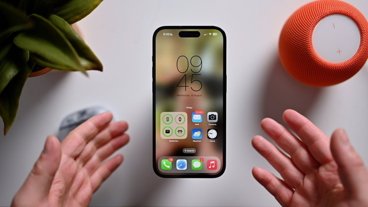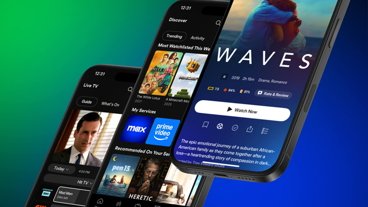A key update to both iOS 14 and watchOS 7 is the introduction of sleep-related features, including sleep tracking, a Sleep Mode, and Wind Down. Here's how to take advantage of the features to get a good night's rest.
Sleep tracking isn't entirely a new concept to Apple's ecosystem, as the iPhone's has provided some of that functionality for a few years. Users could set a time to go to sleep, receive a reminder on their Apple Watch when they should consider going to bed to wake up on time after a desired number of hours of sleep, and then a log is kept of how much sleep the user had over time.
With the introduction of iOS 14 and watchOS 7, Apple has improved the feature and added new elements, all in a bid to get the user to have all the sleep they need. This is done by a combination of notifications, scheduling, automation, and tracking the user as they sleep.
Sleep Schedule
There are multiple elements to setting up the entire Sleep ecosystem of features, but it all starts off with setting up a schedule.
How to enable a sleep schedule in iOS 14
- Open the Health app.
- Tap Browse then Sleep.
- Tap Sleep Schedule under Your Schedule.
- Tap the toggle next to Sleep Schedule.
How to set a sleep goal in iOS 14
- Open the Health app, Browse, and tap Sleep.
- Tap Full Schedule & Options.
- Tap Sleep Goal under Additional Details
- Enter your desired amount of sleep, then tap Sleep Goal once again.
How to set a sleep goal in watchOS 7
- Open the Sleep App.
- Tap Full Schedule.
- Tap Sleep Goal.
- Use the plus and minus buttons to change the goal length.
- Tap Sleep Goal at the top of the screen.
How to set tonight's sleep schedule in iOS 14
- Open the Health app, Browse, and tap Sleep.
- Under Your Schedule, tap Edit.
- Move the curved slider to set your ideal Bedtime and Wake Up times.
- If the curved slider is orange, this indicates there isn't enough sleep on the schedule to complete your sleep goal, so you need to change the times again.
- Tap Done.
How to set tonight's sleep schedule in watchOS 7
- Open the Sleep App.
- Tap the top schedule, under the title Next.
- In turn, tap the Wake Up time and BedTime and adjust the figures using the Digital Crown, followed by Set.
- You can change options on the screen relating to whether an alarm will sound and if Sound and Haptics will be enabled.
- Tap Edit Schedule at the top of the screen.
The above only applies to a single night's sleep. The system also includes the ability to configure an entire repeatable sleep schedule that spans across an entire week.
How to set a weekly sleep schedule in iOS 14
- Open the Health app, Browse, and tap Sleep.
- Tap Full Schedule & Options.
- Tap Edit under any existing schedule you want to change, or Add Schedule for Other Days.
- Move the curved slider to set your ideal Bedtime and Wake Up times. Bear in mind that if the slider is orange, you need to set more sleeping time.
- Tap the icons under Days Active to set which days the edited schedule will apply.
- Tap Done.
How to set a weekly sleep schedule in watchOS 7
- Open the Sleep App.
- Tap Full Schedule.
- Tap Active On, then each day you want the schedule to apply, then Done.
- In turn, tap the Wake Up time and BedTime and adjust the figures using the Digital Crown, followed by Set.
- Tap Edit Schedule at the top of the screen.
Wind Down and Sleep Mode
Sleep Mode is a new setting that starts to reduce the amount of interactions the iPhone and Apple Watch will have with the user. This includes turning on Do Not Disturb to minimize calls, messages, and notifications. The screen of devices will also be dimmed down automatically, to be less of a distraction to the user when they should be sleeping.
Wind Down is a feature that can perform actions within the Apple ecosystem that can encourage users to go to sleep. Automatically running a period of time before the user is set to go to sleep, Wind Down can automatically trigger Shortcuts to take place, such as playing music to help a user relax, before engaging Sleep Mode.
How to enable and disable automatic Sleep Mode in iOS 14
- Open the Health app, Browse, and tap Sleep.
- Scroll to the bottom and select Options
- Tap the toggle next to "Turn On Automatically" under Sleep Mode.
Manually turn Sleep Mode on and off in iOS 14
- Access the Control Center, then tap the bed icon.
- Alternately, if Sleep Mode is enabled, tap Dismiss on the Lock Screen.
Manually turn Sleep Mode on and off in watchOS 7
- Access the Control Center.
- Tap the bed icon.
How to edit Wind Down duration in iOS 14
- Open the Health app, Browse, and tap Sleep.
- Tap Full Schedule & Options.
- Tap Wind Down.
- Adjust the duration timer.
How to edit Wind Down duration in watchOS 7
- Open the Sleep App.
- Tap Full Schedule.
- Tap Wind Down.
- Adjust the timer using the plus and minus buttons.
- Tap Wind Down.
How to add Wind Down shortcuts in iOS 14
- Open the Health app, Browse, and tap Sleep.
- Tap a schedule under Full Schedule & Options.
- Tap Wind Down Shortcuts.
- Tap Add a Shortcut or Add Another Shortcut.
- Tap an app that has a Shortcut enabled for it, then tap the + button next to your required shortcut from the list.
How to add Wind Down shortcuts in iOS 14
- Open the Health app, Browse, and tap Sleep.
- Tap a schedule under Full Schedule & Options.
- Tap Wind Down Shortcuts.
- Tap the red minus button next to the Shortcut.
Sleep Tracking
As is customary for the iOS Health app, Apple is offering detailed statistics for how you sleep in bed. The accuracy of the data and the data itself will differ between users, depending on whether Bedtime was enabled, and if it is using data from an iPhone and Apple Watch combined or just the Apple Watch.
Within the Health app, users can tap "Show More Sleep Data" to see more details about their time in bed, including the average times in bed and asleep,and how many measurements have been taken for the shown data.
The Apple Watch's Sleep app also offers some data, showing how much sleep it has tracked, including how long a user was asleep the last time it recorded, interruptions in that sleep, and graphs over a two-week period showing time slept.
The sleep tracking only applies when a user has set up a sleep schedule for a particular night. On days where a sleep schedule isn't set, Apple won't record the sleep data.
 Malcolm Owen
Malcolm Owen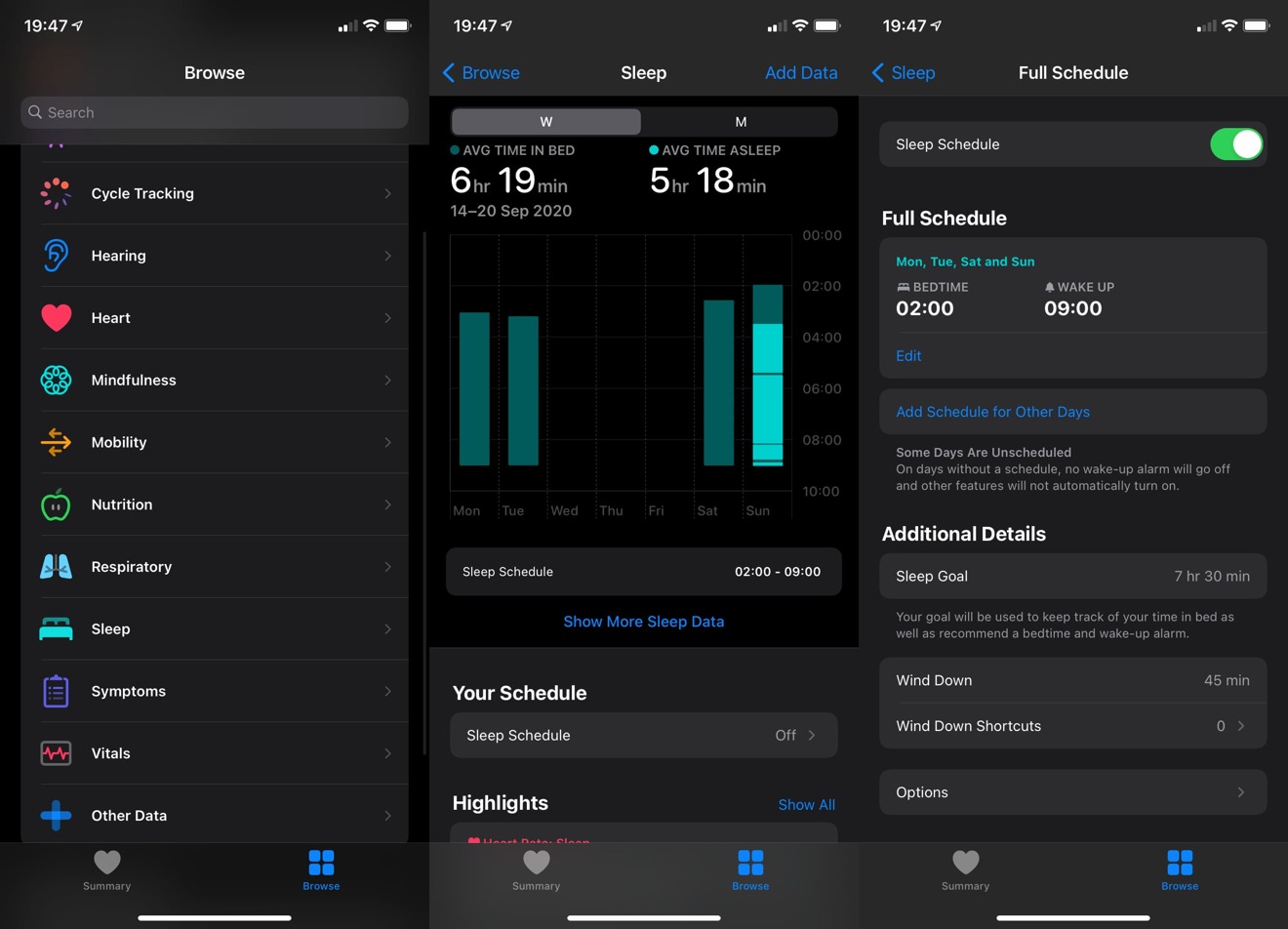
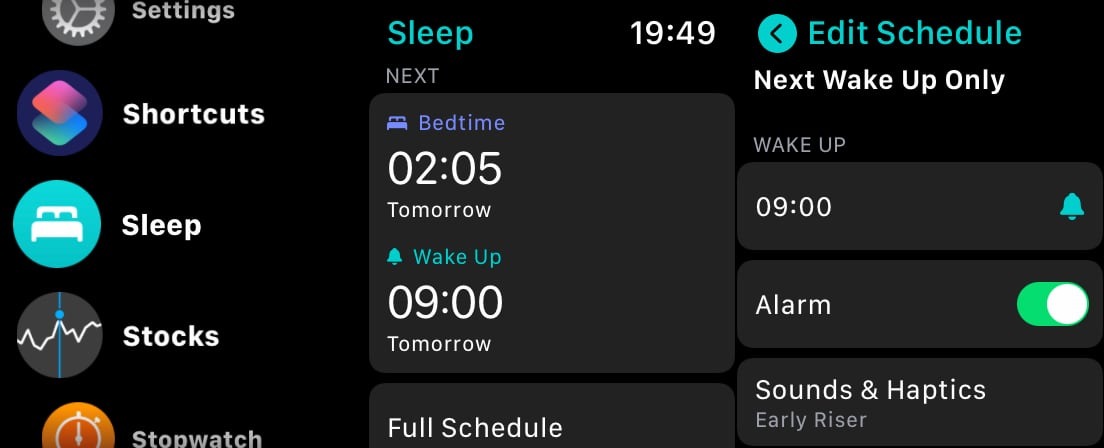
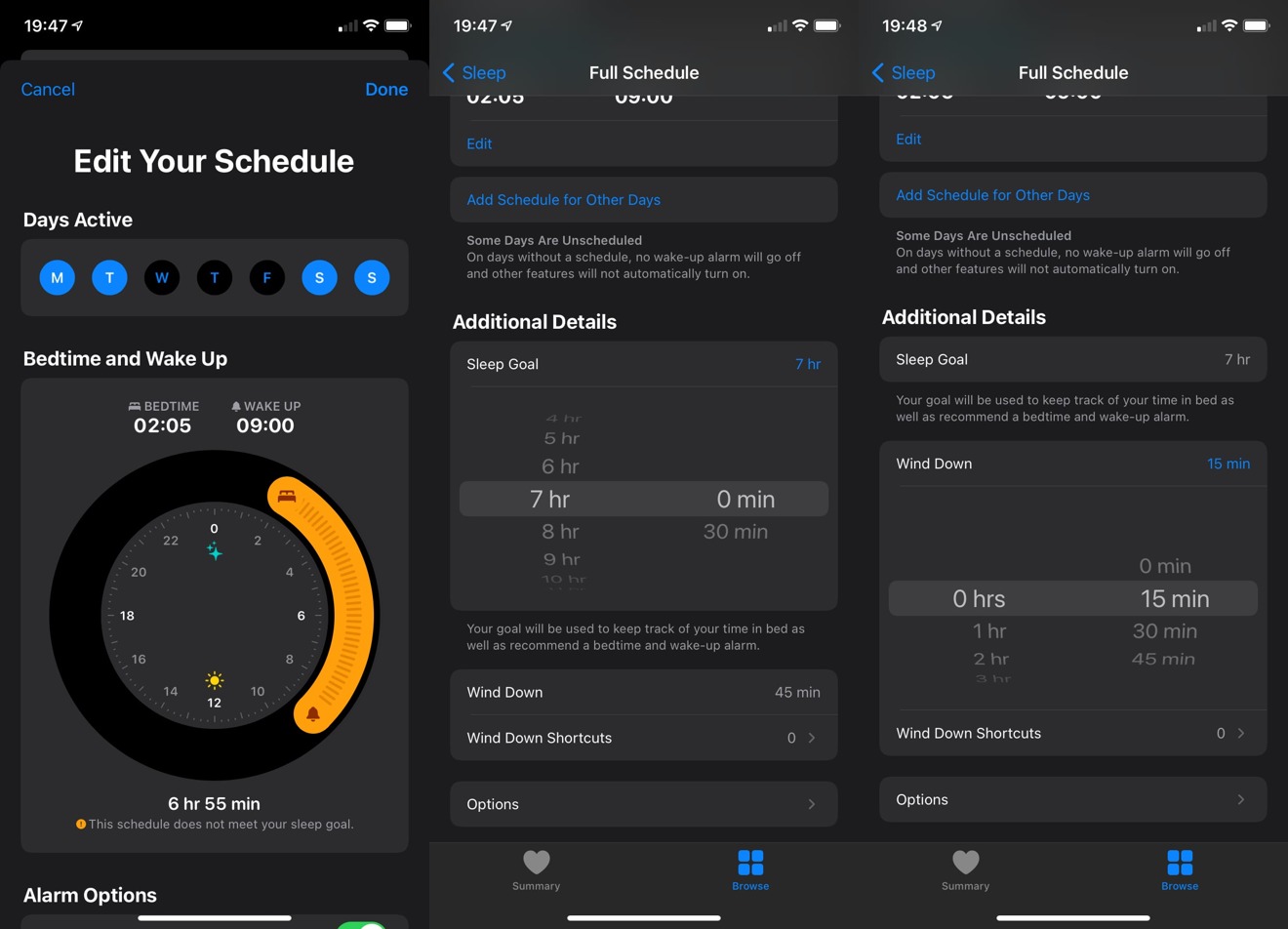

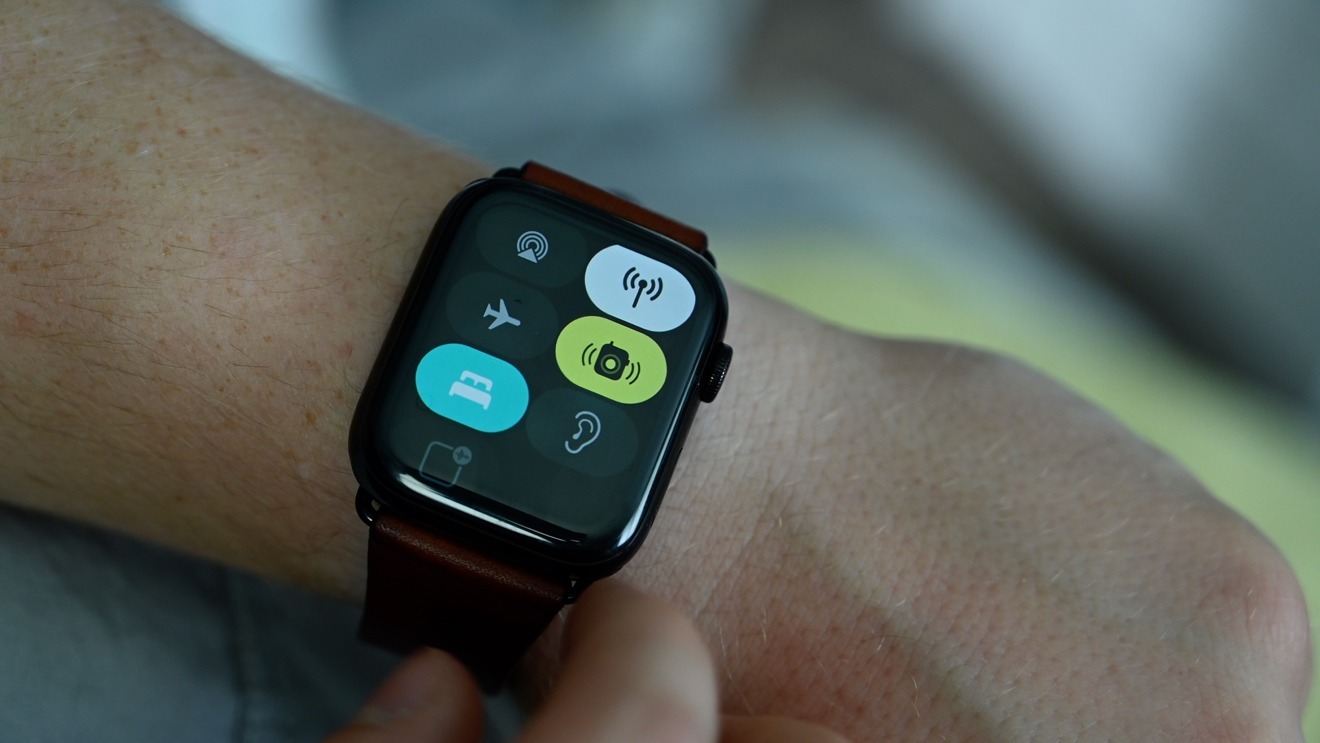
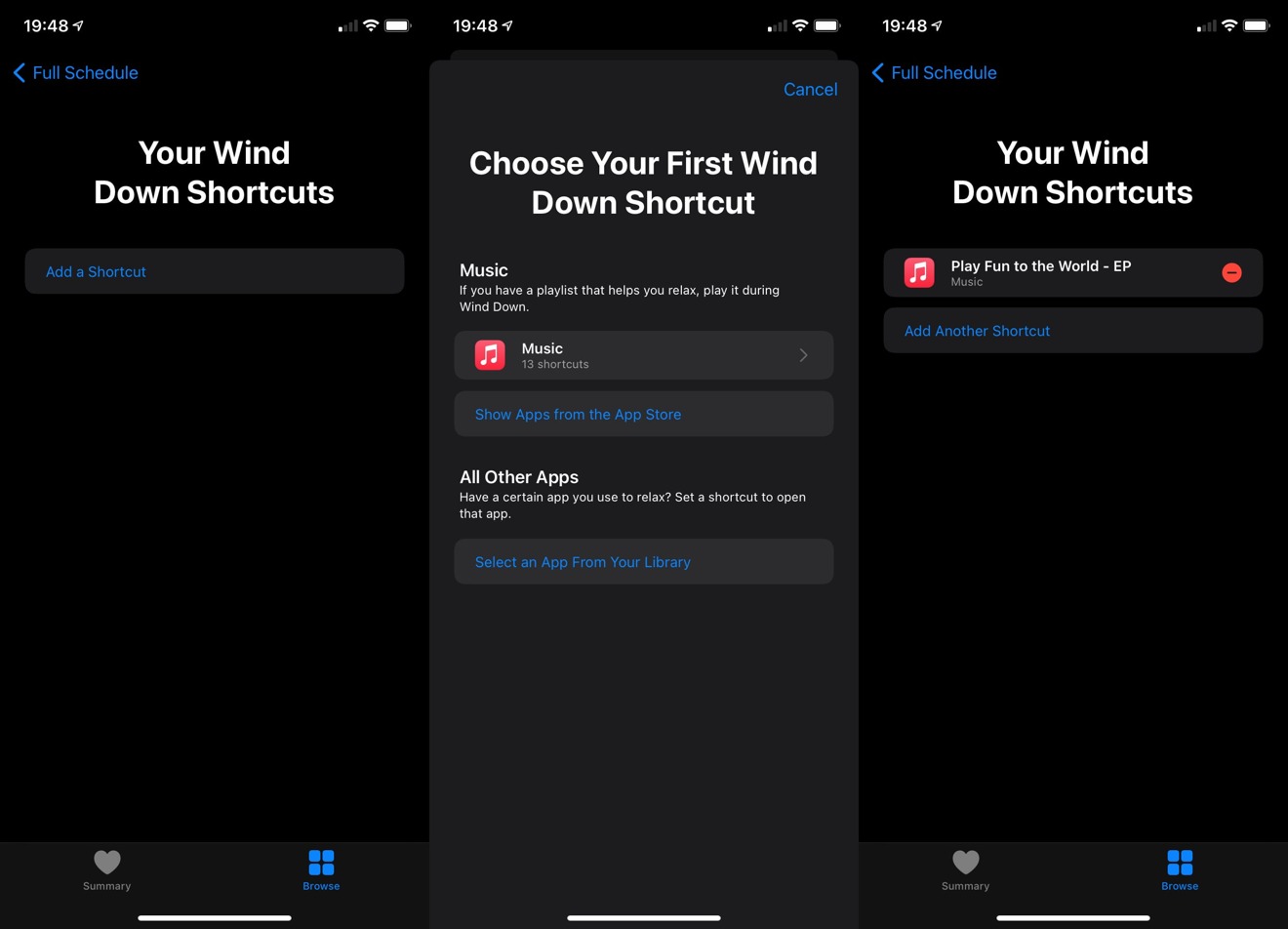










 Amber Neely
Amber Neely

 Wesley Hilliard
Wesley Hilliard
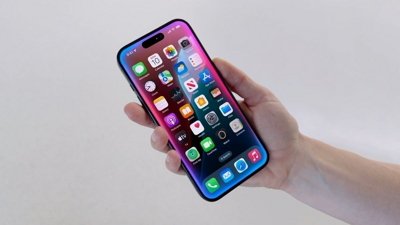
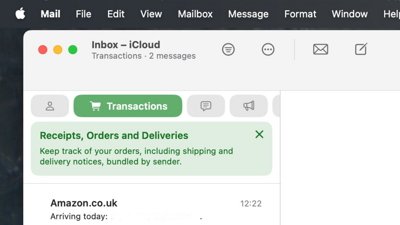
 William Gallagher
William Gallagher